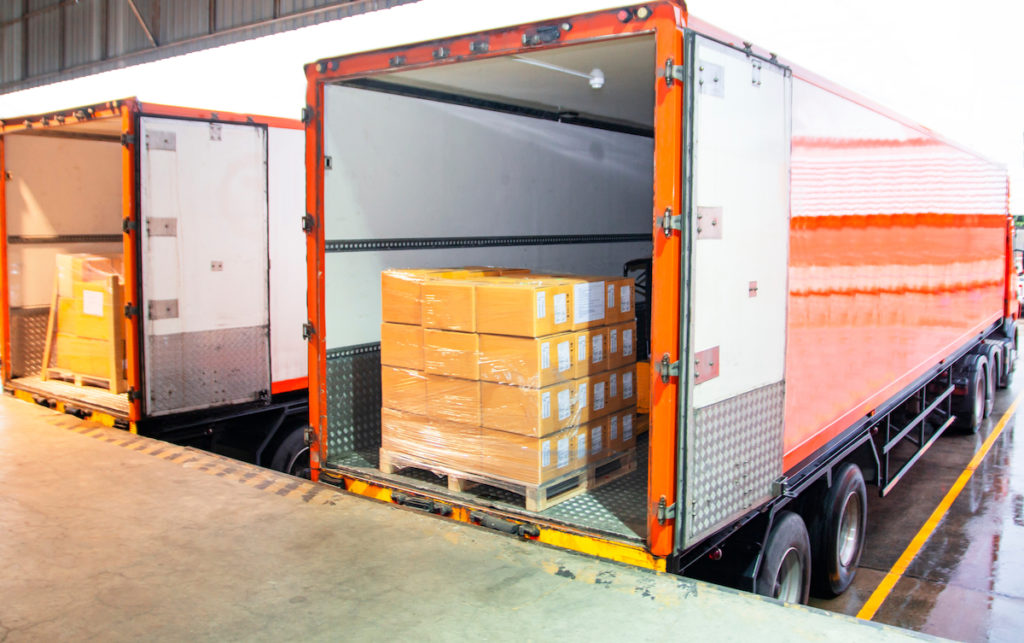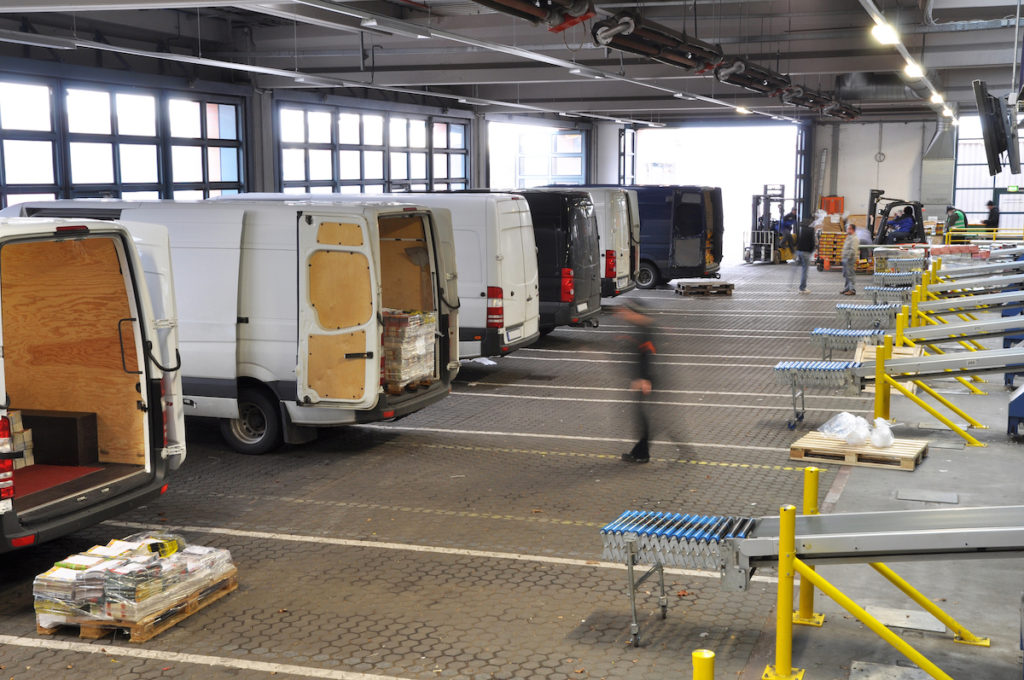HOW TO UNLOAD A VAN SAFELY
CHOOSE YOUR UNLOADING ZONE WITH CARE
People can often rush to unload a van, more so than when loading, which is a particularly dangerous practice if you do so in an unsuitable environment. Unload your van in an area free from traffic or other obstructions so you can take your time and not have to worry about causing an inconvenience to others. Choose a flat surface, or place brake chocks under the wheels to secure the van if on an incline.
BEWARE OF ITEMS THAT HAVE MOVED
It’s inevitable that some items will have moved about during the journey. Even if everything appears fine, approach with caution as you may find items have unbalanced themselves and are likely to fall. It’s also good practice to keep an eye out for any broken glass or splinters from damaged items that can cause harm to your hands and feet as you try to unload. Wearing gloves is good practice.
KNOW WHERE YOU’RE UNLOADING
If you begin unloading items without knowing their final destination, you’ll likely cause an obstruction and only end up moving them twice. Equally, it’s not always feasible to move items directly to where they’ll end up. If you’re moving into a new home, for example, you might decide to unload all your furniture into an open garden space before deciding what goes where.

Loading and Unloading a Van Safely: Our Tips
If you’re running a one-person delivery business, you’ll spend a lot of your time taking things in and out of the back of your vehicle. If the items you’re delivering are cumbersome or heavy, this can spell trouble – and thus it’s worth thinking about best loading and lifting practice.
Start with the Big Stuff
To use your space as efficiently as possible, get large items like fridges loaded first. It’s a lot easier to find space for a small item than it is to cram large ones in at the end. Add to this the fact that your larger items are likely to be heavier than your small ones, and therefore capable of inflicting crushing damage, and the sense of starting with the big stuff becomes obvious.
Spread the Load
Obviously, you don’t want your van to be unbalanced. As such, avoid stacking everything on one side of the van. Push everything right to the rear, and secure small items beneath seats to prevent them from flying around when you go over a speed bump. To be sure that you’re not overloading your van, learn its maximum loading capacity, and figure out a rough idea of when you’re approaching it.
Secure the Load
The interior of your van should provide anchoring points, to which you’ll be able to attach straps. Use these to keep your goods fixed into position. This step is especially worthwhile if you’re transporting fragile goods. Replacement straps are inexpensive, so invest in them before your old ones snap.
Choose the Right Area
Ideally, you’ll want to unload your cargo onto a flat surface that’s out of the way of traffic. Unfortunately, this isn’t always possible. Since we don’t get to pick our cargo’s destination, it’s worth taking a few measures to limit the risk. If you’re unloading onto an incline, put brake chocks beneath the wheels. If items look as though they’ve moved during transit, treat them with special caution, as they’re the most likely to move again when you start to unload them.

The process of loading/unloading a vehicle
Organizing
Before packing the vehicle make sure to gather all the materials so that you don’t have to face any problem regarding space. In order to gather the materials, you may require special instruments such as a dolly, padding furniture, tape for packing, straps and shrink wrap etc.
Step 1: Toolkit
Remember to keep a toolkit close by for taking apart and reassembling the furniture.
Step 2: Separation of items
Keep the important stuff you will need immediately on your person and not in the truck.
Step 3: Special care for fragile items
It would be more appropriate if the fragile items are kept separately.
Step 4: Disassembling furniture
To protect your furniture you have to disassemble it. This will help you secure it as much as possible, e.g.
- Take out the cushions from the sofas.
- Disassemble your bed
- Take out the bulbs from the lamps
- Remove the drawers from the dressers (It will be easier to lift them)
- Collect all the screws in sandwich backs and label them so that you don’t have to worry about which screw is to be fixed in which item.
- IMAPORTANT: Disassemble all IKEA furniture and wrap them in moving pads as necessary. Due to the materials used to build the furniture it is very fragile and may break while moving it.
Step 5: Placement of Furniture
After you are done with the disassembling, bring all the furniture in front of the truck. This will help in adjusting it in the truck in a proper, organized way.

Unloading a Truck
A Truck loaded with proper planning and care will take any worries out of an Unloading job. There are a few things which need to be considered while unloading a fully loaded removals truck.
- Be very carefully when you open the rear gates of the truck because momentum can make the transit boxes press on to the gates and can easily fall over you.
- Position the truck for unloading close to the entrance, and make sure there are no tripping hazard.
- Clear the pathway to the house and open main doors.
- If the boxes are marked properly, they can be painlessly moved to the appropriat
Vehicle Loading and Unloading: Keeping Your Workers Safe
For many businesses, loading and unloading trucks is a daily activity. This activity also comes with a higher risk of employees getting injured on the job. Loading and unloading motor vehicles is one of the most common causes of workplace injuries in the manufacturing, distribution and courier industries. From forklift accidents to falling materials, employees in these industries must be focused and aware at all times to prevent serious injuries. This article will provide valuable tips businesses and employees can implement right away to keep workers safe during vehicle loading and unloading.
Most Common Injuries
Loading and unloading cargo are activities which heighten the chance of workplace injuries. Some of the most common workplace injuries related to vehicle loading and unloading include:
- Sprains and strains from improper lifting or handling of cargo
- Crushing injuries caused by colliding with a forklift, truck, falls from loading docks, or falling stacked materials
- Bruises and cuts
- Spinal injuries from improper loading, unloading, falls or being crushed
- Head trauma from falling cargo
These injuries can range from minor to serious, showing how important it is for businesses to set the proper standards for how employees should be loading and unloading. Injured workers create financial and operational challenges for businesses. Keeping employees safe, aware, and engaged while at work will help cut down on the risk of injuries related to vehicle loading and unloading.